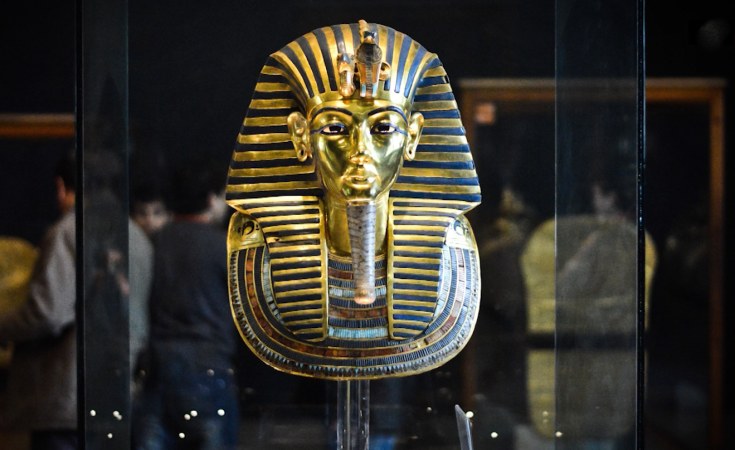Cairo — The golden mask of ancient Egyptian boy king Tutankhamun will be back on display at the Egyptian Museum in central Cairo in a week, Egypt's antiquities minister said on Wednesday.
The mask was being restored after the beard of the priceless antiquity was reportedly broken by cleaners and hastily glued back on with epoxy. Ancient Egypt's youngest king was making headlines in local and international news outlets last January when the incident was revealed.
Minister Mamdouh al-Damati told state news agency MENA that the mask will be back on display after the renovation is complete. The details of the renovation will be announced at a press conference, he added.
In October a German conservator led a team which undertook a full restoration of the mask, funded by a donation of EUR 50,000 from Germany.
King Tut belongs to the 18th dynasty. He ruled from 1361 to 1352 BC and died at 17.
His tomb was found by Howard Carter in 1922, in what is often dubbed the discovery of the century because the tomb was found largely intact.
He made headlines this year again when British archaeologist Nicholas Reeves posited a theory that the walls of the ancient Egyptian king's tomb could be hiding a secret tomb behind them. The walls have been scanned by Hirokatsu Watanabe, a Japanese radar specialist to test the hypothesis and the scans are currently being analyzed in Japan.
This may bring the world one step closer to solving the mystery of the disappearance without a trace of elusive Pharoanic Queen Nefertiti, who Reeves believes may have been buried in a hidden chamber inside Tut's tomb.
After a primary scan of the tomb, Egypt's antiquities minister said last month that there was a 90 percent chance of a new archaeological discovery and added that the ongoing exploration may lead to one of the "most important and greatest archaeological discoveries."


